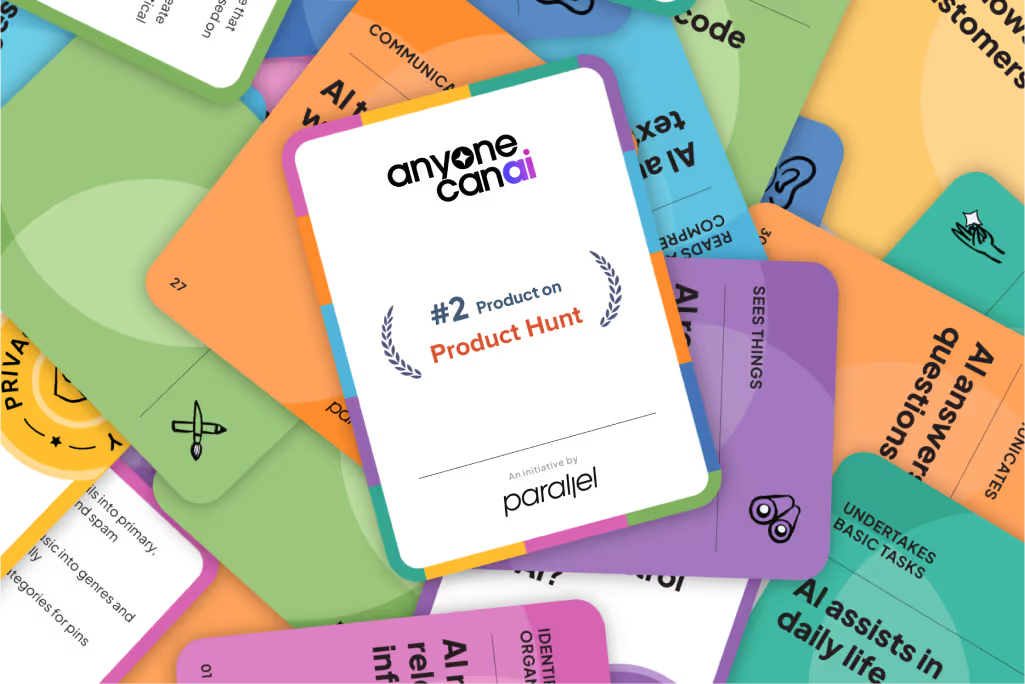Learnings from Running a Remote Design Jam for TTC Labs
Design Jams are a great way to work and collaborate with individuals you haven’t met before. But how to conduct them remotely? Here's some practical advice.

A design jam is a collaborative brainstorming activity, geared towards generating solutions in a fun and creative environment. Jams can be self- or group-initiated, or planned in advance and facilitated. The format of a jam is flexible to the problem that is being addressed.
Since 2019, Parallel has been partnering with TTC Labs, an initiative of Facebook, to run Design Jams in India. In 2020, along with Sahamati, D91 Labs, DICE and CIIE.CO we organised two Design Jams on two tracks - future of data-sharing with Account Aggregators, and building trust in digital financial services. It was attended by over 20 participants from different organisations like Flipkart, Navi, JSALaw, Trans Union, Chicago Trust, and Tala.
In the past 6 years, we have conducted a number of Design Jams. It’s a great way to work and collaborate with individuals you haven’t met before, while appreciating the wide range of skills everyone brings to the table, such as strategy, business analysis, prototyping, visual communication and even coding. But this one was different. Thanks to the global lockdown it was the first time that a jam was happening virtually. It added an extra layer of difficulty to our event. No glass door to scribble on, no stack of post-it notes to put up. We didn’t get to see our teammates physically, or grab a coffee together on breaks. But I learned a lot from the experience, so I thought I’d share some of my reflections here and how we overcame the challenges to gain great insights,
1. Speculative nature of the Jam
During a Design Jam, participants have limited time to understand a problem, work with people they haven't met before and come up with solutions. And when you add working remotely, things only get more interesting!
In one of the Design Jam, the focus was on introducing Account Aggregators (AA) in existing Fintech products to provide a better experience to the business and the user. However AA being a novel concept, there were no apps in the market using it and participants wouldn't have much idea about it.
You can learn more about Account Aggregators here
We brainstormed different ways of educating participants quickly about AA during the Jam and debated the pros and cons:
- Should we give them an imaginary AA flow?
- Should we provide an abstract user flow or make a full-fledged mockup showcasing how to integrate AA in an existing product
Our solution: Nudge but don’t ask leading questions
Ultimately, since we had limited time in the Jam and did not want the users to get stuck on learning a new concept from the beginning, we decided to:
- Showcase a customer journey map for existing fictional apps - with key pain points highlighted to serve as a starting point for participants.
- Ask participants to come up with possible How Might We during the Expert Talks and use them as prompts when they started to work on solutions.
- Seeding open-ended questions of what-if scenarios to get people thinking.

We had to constantly tread a thin line of not influencing the users too much and at the same time making sure we provide them with enough prompts for them to explore and imagine on their own.
2. Setting up problem statements for participants
If participants are asked to work with existing products, their existing biases and assumptions would prevent them from having a Blue Sky Thinking.
How do we ensure that the problems and the possible solutions are grounded in reality and can be implemented in real-life scenarios and not entirely made up?
Our solution: Identify potential data-sharing touchpoints and challenges in existing fintech apps
This involved studying a lot of existing apps across various domains like personal lending, wealth management, EMI lending, etc to understand the similarities and differences. Our conversations with Subject Matter Experts from Policy and Design backgrounds helped deepen our understanding.
After gaining a good idea of the products and the key workflows, we came up with resources to help participants understand the problem statement during the Jam:
- Overview of the product
- Data usage scenarios
- Customer Journey Map
- Pain points of users and business
- Mockups of a fictional product to illustrate product functionality.

3. Tools for designing and collaboration
Prior to the Jam, we create a lot of assets to run the exercises as well as to serve as a brief to the participants. Working with multiple stakeholders ensured it had to be seamless to capture feedback and track changes. Also the tools for the Jam participants had to be one with no/low learning curve.
Our solution: Pick tools with minimum friction
Internal collaboration
We chose to go with Figma for collaborating on designs and content as it can be shared with all the stakeholders.

External collaboration
For the participants, we chose Miro since it is a no-brainer even for novice users.

💡 TIPS
- All explorations, iterations and reviews were done on Figma first and only the final versions were uploaded on Miro to avoid back and forth.
- Since many participants would be working on the same Miro board, we locked the uneditable layers avoid accidental deletion or movement by users. This helped ensure that users could focus on the key task and not worry about moving layers around by mistake.
4. Ensure a seamless experience for the participants during the Jam
We evaluated a bunch of video-conferencing tools for the Jam and finally decided to go with Zoom as it is quite easy to use and already used by a lot of people. During an in-person Jam, we would move participants to different groups for the activities. Making this process seamless in a virtual Jam kept us on our toes.
Our solution: Try-Learn-Repeat
We modified the format of the Jam slightly to be conducted remotely and tried different variations. We collected feedback from stakeholders and folks who were not involved with the planning to get a sense if things were clear. Finally after umpteen iterations we had a fool-proof format.
- Preconfigured and tested Breakout Rooms in Zoom.
- Multiple co-hosts on Zoom to monitor discussions and respond.
- Instructions for all activities on Miro board so it can be run with as little intervention as possible.
- Whatsapp groups at individual team level and the overall group for flagging issues, quick communication and communicating with participants.
- Dedicated persons to take care of Zoom logistics and help participants move to the respective Breakout Rooms.
- Backup computers and offline copy of slide decks to handle connectivity issues.
5. Get things rolling like a well-oiled machine
Running a virtual Design Jam requires staying on top of a gazillion things - the participants list, email ids, team assignment, asset links, Whatsapp group links...the list is pretty much endless. And when you have multiple people collaborating on various activities, all bets are off.
How do we have all these information in one place?
Our solution: Google Sheets to the rescue
We maintained a collaborative sheet containing all the information in one place and shared with all collaborators. This helped our partners quickly update us about any modification right away.

6. Getting everyone to the finish line
In a regular Jam, the participants go from an idea to a working prototype in a day. But in a virtual Jam, the prototyping was done offline keeping in mind the time constraints. For one Jam, we gave the teams about 2 weeks to complete the prototype, coupled with several rounds of policy and design mentoring.
Since most participants had a full-time job during the day, they would be busy with their regular lives and the momentum to complete what they started would tend to fizzle out.
Our solution: Have a solid post-workshop plan in place
Here are some of things we did to keep the participants engaged after the workshop:
- Check in periodically on the progress on the team Whatsapp groups; offer help and suggestions wherever necessary.
- Provide designs to teams struggling to prototype to take things to completion.

Running a virtual Design Jams was crazy, chaotic, fun and interesting. But it was also a chance to test new ways of arriving at results, collaborate and think out-of-the-box.
In the end, it was successful in providing high-level design principles that can help design more trustworthy products for new digital users. We went ahead and built prototypes to test these ideas on real users and understood better how the product changes affected their perception and trust. More about it on our next blog!






.avif)






